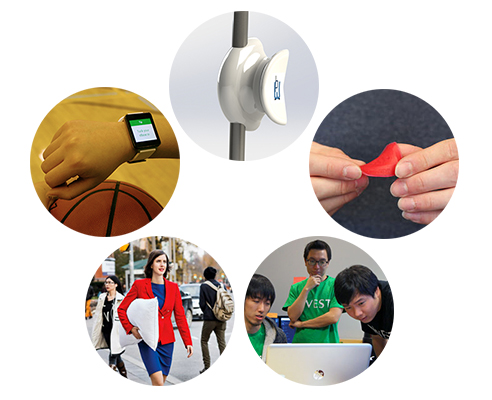
May 29, 2015
Tyler Irving
Could engineering improve your basketball jump shot, optimize your sleep schedule or help you make smarter investment decisions? These are just a few of the challenges that are motivating the next generation of entrepreneurs in U of T Engineering.
The Faculty of Applied Science & Engineering is creating more student startups than ever — due in part to the growth of incubators such as the Faculty’s Entrepreneurship Hatchery and extensive experiential learning opportunities that equip engineering students with critical skills to solve pressing problems.
In addition to working within U of T Engineering, The Hatchery is also part of a cross-campus network of entrepreneurial resources coordinated by the Banting & Best Centre for Innovation & Entrepreneurship, including local incubators, courses and other activities.
Here are five of the latest U of T Engineering student startups to watch:
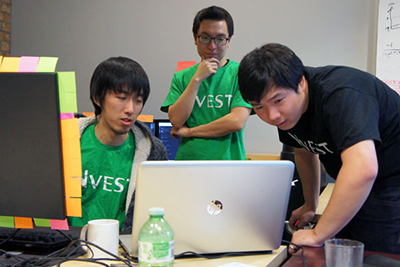
Nvest
If you were hiring a new employee, you would always check their references first. So why wouldn’t you do the same for those who provide investment advice? That’s the idea behind Nvest, a social network that allows users to trade stock tips and transparently track their success.
Jackie Yan (ECE 1T4), the company’s co-founder and chief technical officer, bills Nvest as the “LinkedIn of stock recommendations.” “It’s built to track everybody’s advice, and allows you to judge based on their past performance whether you can trust their advice or not,” he says.
Free of charge and currently boasting more than 1,600 users, Nvest is based at UTEST and has been featured in recent articles in The Globe and Mail and Techvibes.
Taking a page from the Facebook — which in its early stages was available only to university students — Nvest is targeting the U of T community to find its early adopters. “Sixty to 70 per cent of our active users are U of T students, but we have some from South America, India and all over the world,” says Yan.
Yan credits his undergraduate education for his strong programming abilities, but says multidisciplinary courses like ESC 101 Praxis I helped him think like a designer.
“It was planning and going through all the steps to make sure you’re ready before you actually start building,” he says. Outside the classroom, Yan was involved in the You’re Next Career Network and Nspire, both of which provided him with connections and motivation to go out and build his business.
“Around U of T, there’s a very good ecosystem of people promoting entrepreneurship and innovation,” he says. “Every student can get a lot out of it.”
Magniware
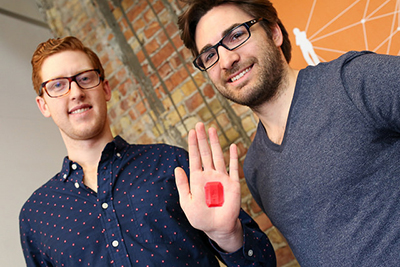
It looks almost like a child’s toy: a small rectangle of a jelly-like substance that sticks strongly to skin, but not hair, making it easy to remove. Its designers hope this tiny device will mean big changes in how we monitor our health, ushering in a new era of “life optimization.”
The Magni — named for a Norse god, the son of Thor — is the flagship product of Magniware, a Toronto-based startup with strong roots at U of T Engineering. It’s designed to sit on the surface of skin and collect detailed physiological data that can help its wearer monitor and improve their physical and mental health.
Developed by co-founders Engineering PhD student Miles Montgomery (IBBME PhD Candidate) and fellow U of T student Alex Mosa in 2014, the Magni is a savvy mix of novel chemistry, nano-scale design and electrical and computer engineering.
The Magni’s sensors can pick up tiny electrical changes on the skin in the same way that an electrocardiogram (ECG) would, allowing direct monitoring of the heartbeat. It also contains accelerometers to measure movement as well as temperature sensors, providing a comprehensive picture of the wearer’s health and well-being.
The data is transmitted via Bluetooth to a smartphone, where sophisticated algorithms turn it into qualitative advice. For example, the Magni might notice you getting jittery before a big meeting and recommend some breathing exercises.
“I came to U of T because I wanted to be the first person to do something,” says Montgomery. “This is a completely new technology.”
For Mosa and Montgomery, what mattered most was putting together the perfect multidisciplinary team. “We knew we needed an ecletic mix of chemical engineering, materials science, robotics, circuit design, basic algorithms and a deep understanding of biology, physiology,” says Mosa.
Today, the team includes Robert Brooks (MIE PhD Candidate), Michael Zhang (ECE 1T3 + PEY), Aniruddha Borah (ECE 1T2 + PEY), Firas Kamal Eddine (ECE 1T2 + PEY) and Rotman MBA candidate Anthony Mouchantaf. Many of the members met through graduate-level courses at U of T that were open to students from different disciplines.
Now ready for testing, the Magni is being used on high-performance athletes who need detailed feedback on their training schedules. It’s also being tested by rehabilitation researchers, who will soon use it to analyze their patients’ gaits.
“Not only will this testing help validate our technology, but it could provide help to someone who really needs it,” says Montgomery. “That’s why I wanted to do a PhD in bioengineering.”

Syncadian
It’s hard to be at your best when you don’t get enough sleep, but for military personnel or airline pilots, fatigue is a serious safety issue.
Defence Research and Development Canada (DRDC) the research arm of the Canadian military, has studied the problem for more than a decade. Two years ago, DRDC approached a team of undergraduate engineers in APS 490 Multidisciplinary Capstone Course with a simple question: could they use this extensive body of research to develop an app that would allow military personnel to better manage their sleep cycles and avoid fatigue?
The team, which included Hanna Janossy (IndE 1T3 + PEY, MEng Candidate), successfully produced an app that helps users mitigate the effects of jetlag. Based on DRDC’s research into fatigue science, the app gave users advice about when to sleep, nap, seek and avoid light, and take melatonin. But there was a feeling around the table that more could be done. “Our contact at DRDC was very entrepreneurially-minded,” says Janossy. “Right from the beginning, he encouraged us to turn it into something commercial.”
He couldn’t have asked for a more receptive audience. “My father is an inventor, and I grew up going to trade shows all around the world,” says Janossy. “I’ve always wanted to be an entrepreneur.”
In 2014, Janossy co-founded Syncadian Inc. with Ryan Love, a post-doctoral fellow in computer science at U of T and at DRDC. “What we want to develop is a small device that can test for melatonin and other hormones associated with sleep from samples from saliva,” she says. “Ideally it would be able to plug into a smartphone and interface with our app.” The team is currently receiving support from the University of Toronto Early-Stage Technology (UTEST) program.
Janossy, who is working on the company part-time while she pursues a Master of Engineering degree, says that her desire to start her own business is part of what attracted to U of T Engineering in the first place. “It seemed to have a stronger overall entrepreneurial ecosystem than some of the other schools I looked at,” she says.
In addition to the problem solving and critical thinking skills she developed in engineering, Janossy credits her experience as director of Women in Science and Engineering (WISE) for preparing her to be a CEO. “I made all the mistakes of the beginner manager,” she says. “What I learned was that when people are given responsibility and ownership over the problem, they’re much more likely to perform. That still influences my thinking today.”
Read more about Syncadian in U of T Magazine.
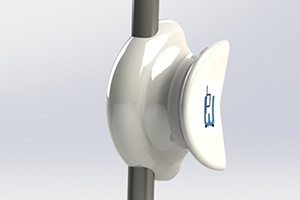
PowerWring
The average caretaker wrings out a mop more than 100 times a day. This process typically involves squeezing the mop through a mop-wringer, a device that requires bending over and applying about 15 pounds of force by hand. So it’s no surprise that back sprains and strains are common.
For Jeremy Wang and his teammates Shuyi Wu, Ryan Williams and Noah Yang (all Year 3 EngSci), the solution was elegantly simple: use the long handle of the mop itself as a lever to multiply the force of the wringer. The team’s measurements showed that this simple innovation cut the required force in half or even more if they use two hands.
“It really eliminated this redundancy of having two levers,” says Wang. “It was kind of a Eureka moment.”
The team developed the PowerWring, a simple device that allows a mop handle to clip on to a wringer handle. The solution, which was developed as part of the course ESC 102 Praxis Engineering Design, was so good the team decided to take it to the next level.
The team approached the Hatchery and was selected to be part of the 2014 cohort. Throughout the summer, it developed a business plan and refined its design. It also began working with law firm Bereskin & Parr LLP on a patent.
“Any time we wanted feedback on something, [the Hatchery team] gave it almost immediately,” says Wang. “They were with us for all our meetings with the lawyers, and they kept us motivated.”
By September 2014, their company, dubbed PowerWring, had been granted a provisional patent. Last month, the team received word its application for a full patent was officially under review at the U.S. Patent Office — a first for the Hatchery. It may take a year or more for the patent to be granted, but the team is already undertaking beta testing and collecting feedback on its design from working caretakers.
“For us, it means having the comfort to actually go out and turn this into a real, impactful product, knowing that we’d be able to receive the due credit,” says Wang. “That’s a big step forward.”
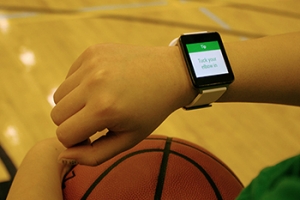
Onyx Motion
With a background in biomedical engineering and an engineer’s desire to build new things, Marissa Wu (EngSci 1T3) was primed to get into the entrepreneurship game. Yet the seeds of her company Onyx Motion were likely sown much earlier.
“I grew up playing basketball,” she says. “My dad got me into it, it was how we bonded, so I’m sure that was important.”
Today, Wu has developed a digital coaching app that analyzes an athlete’s sporting form using the data from the accelerometer in a smart watch. Wu used her extensive training in biomechanical modelling of the human body to determine how to translate accelerometer data into actual movements.
Called Swish, the app records motion data associated with a particular movement, such as a free throw. It then uses machine learning to provide feedback on how best to adjust the technique for maximum success. Wu anticipates that Swish users will one day be able to download the data of major sports stars to compare with their own.
Wu was part of The Next 36, an entrepreneurial leadership program run by a not-for-profit charity dedicated to fast-tracking the development of Canada’s most talented young innovators. She also received support from the University of Toronto Early-Stage Technology (UTEST) program.
Wu says her co-curricular activities, particularly her leadership role in the University of Toronto Engineering Competition, prepared her to become her own CEO. “I discovered that I loved running a team and creating my own path,” she says. “I liked the fact that there’s no right answer.”
Momentum is building for Onyx Motion. The team recently appeared on Next Gen Den, an online companion to CBC’s Dragons’ Den. Wu expects a test version of the app will be available for download within months.
“We built it pretty much from scratch, so there isn’t a lot to compare it with,” she says. “We’re excited to learn from the experience of people using it, and to move forward with making it that much better.”
These five startups aren’t the only ones to watch. Learn more about other startups that have emerged from ECE in recent years:
FuelWear — Intelligent, heated base layer clothing
Nanoleaf — Energy-efficient LED light bulbs compatible with current sockets
Nymi — Electrocardiogram (ECG) sensor that uses heartbeat as a unique ID to secure passwords or online transactions
More information:
Marit Mitchell
Senior Communications Officer
The Edward S. Rogers Sr. Department of Electrical & Computer Engineering
416-978-7997; marit.mitchell@utoronto.ca